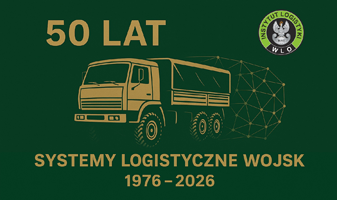ORIGINAL PAPER
Model of vehicle selection for road transport tasks with the use of the application log-hub and solver
1
National Suppert Detachment, Headquarter Eurocorps
2
Wojskowa Akademia Techniczna, Wydział Bezpieczeństwa, Logistyki i Zarządzania, Instytut Logistyki
3
Politechnika Warszawa, Wydział Transportu, Polska
A - Research concept and design; B - Collection and/or assembly of data; C - Data analysis and interpretation; D - Writing the article; E - Critical revision of the article; F - Final approval of article
Submission date: 2021-06-14
Acceptance date: 2021-12-20
Publication date: 2021-12-31
SLW 2021;55(2):193-212
KEYWORDS
TOPICS
ABSTRACT
Based on the available literature, the characteristics of transport tasks carried out in transport networks and the division of means of transport due to the tasks performed, a model of vehicle selection for road transport tasks was developed using the log-hub and solver applications based on the Excel spreadsheet. The model consists of several elements: a sheet for calculating the distance and travel time based on postal codes or city names, a database of available vehicles that may have 10 different load capacities, 3 networks for which vehicles can be selected due to cost minimization, and a sheet supporting the taking decisions regarding the selection of vehicles for the tasks. The model takes into account the differences in driving times for different vehicles on the same route (driving time for a passenger car and a tractor unit) and different unloading times for vehicles with different load capacities. The subject of the analysis is the transport of pallet loading units that do not require special transport conditions. The model is based on vehicles with a universal body. 3 networks were analyzed. The analysis shows that network 1 is a purely theoretical network from the perspective of the carrier and freight transport. It costs half that of network 2. Network 3 is used to select vehicles for several locations, assuming that they all depart from the same town. On the basis of the developed and verified model, it was concluded that during the cost analysis one should take into account the real, not abstract network layout (usually vehicles must reach the place of loading and after completing the task, go from the place of unloading to another point, which generates costs and travel time extension). You should avoid tasks that take place over short distances and require long journeys (this is the most costly). Vehicles with a lower load capacity perform tasks faster, therefore they are more suitable for the transport of loads that require minimization of travel time or high dynamics of deliveries.
Share
RELATED ARTICLE
We process personal data collected when visiting the website. The function of obtaining information about users and their behavior is carried out by voluntarily entered information in forms and saving cookies in end devices. Data, including cookies, are used to provide services, improve the user experience and to analyze the traffic in accordance with the Privacy policy. Data are also collected and processed by Google Analytics tool (more).
You can change cookies settings in your browser. Restricted use of cookies in the browser configuration may affect some functionalities of the website.
You can change cookies settings in your browser. Restricted use of cookies in the browser configuration may affect some functionalities of the website.


